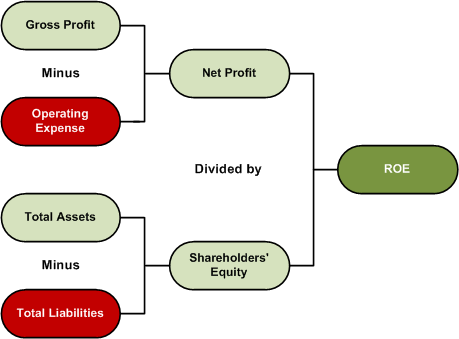What Is the Difference Between Return on Assets and Return on Equity
Post on: 16 Март, 2015 No Comment

These 10 animal facts will amaze you.
Adorable animal families that will make you aww.

These 10 facts about space will blow your mind.
The difference between return on assets and return on equity in a general sense is based on gross versus net profits. Assets usually represent the market price of durable goods such as real estate. automobiles, and heavy construction equipment, and businesses themselves or investments like bonds that hold their value over time. Equity, on the other hand, represents what the actual monetary value of something is after all outstanding debts and liens have been subtracted from it, and this can also include taxes that must be paid such as those on retirement accounts or annuities when they are cashed in. Both return on assets and return on equity calculations are often used in the investment community to ascertain what the value of a business is if it has to be liquidated, or how much built up value it has for determining a safe level of borrowing for business growth. More specifically, however, return on assets (ROA) and return on equity (ROE) are metrics that corporations use based off of company earnings or net income to determine if the company is producing what is considered a healthy profit and growth margin.
The standard way that corporations use to figure out what a return on investment (ROI) is for a business or its shareholders is based off of net income. Net income, as displayed on a company’s balance sheet. is a figure that represents the revenue that a company has made in a given period after subtracting all business expenses and losses, and, in this respect, it has some similarity to the absolute equity value of the company itself. Return on asset calculations are something of an idealized form of representation as to a company’s worth, where net income is divided by total assets to yield a ROA percentage. Adjustments can be made to ROA by adding interest rate costs back into the income before doing the calculation, but the debt that the company has is not used to produce the final percentage, so it can be an arbitrary figure.
Return on equity is considered to be the most important ratio to look at when determining the value of a business, and is considered a direct indicator of how well the management at the firm is running the company. This figure is also a percentage like ROA, and is calculated by dividing net income by average shareholder equity. Average shareholder equity is also referred to as share capital, stockholder ‘s equity, or net worth, and can be represented in two ways. In the traditional form, shareholder equity is simply total assets minus all debts and liabilities. which is the typical way that equity is defined. Shareholder equity can also be defined, however, by adding the retained earnings or revenue that the company has made on top of the value of all assets, which often gives a much higher ROE percentage, as earnings often exceed assets in many corporate environments.
Since return on assets and return on equity are calculated very differently depending on whether debt is figured into the process, investors have different standards for what are good representative numbers for each value. ROA is an idealized number that negates company debt, and this makes a ROA value of 5% or greater, one that is considered healthy by financial professionals. ROE must be higher since debt is figured into the percentage and it is a truer representation of company value. Investors look for a minimum ROE of 15% or a company is not considered to be growing at a sustainable rate.
Another important factor to keep in mind with return on assets and return on equity is how they compare to each other within the same company. If ROA is low and ROE is high, it indicates that a company’s assets are limited and it is carrying a lot of debt. Where ROA and ROE more closely approach each other, the indication is that debt is low and the company is likely experiencing steady, reliable growth. When return on assets and return on equity are used to gauge the viability of a business, the figures must be looked at over the course of many quarterly or annual business cycles in order to obtain an accurate picture of where a company is headed.














